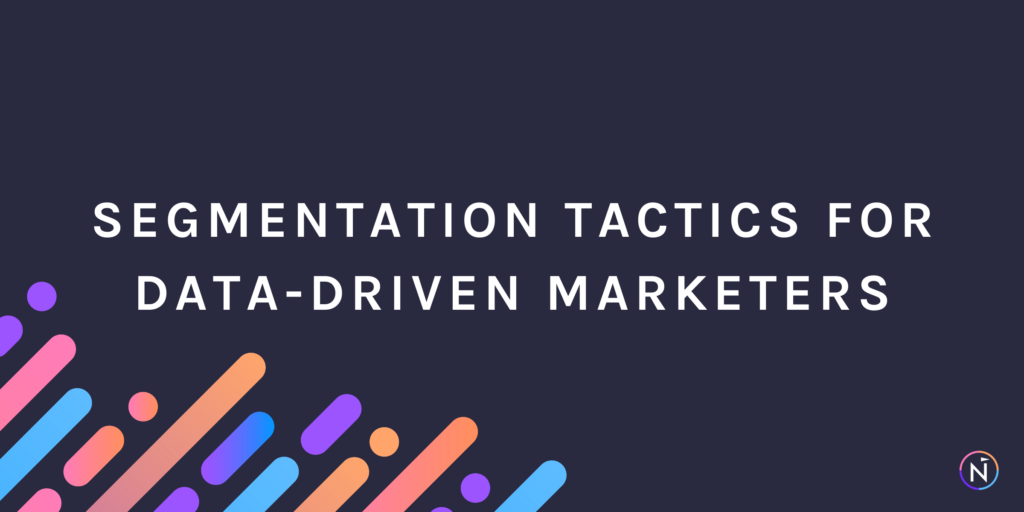Not to sound hyperbolic, but in the land of marketing automation, segmentation is everything.
Segments are the backbone of the Net-Results platform for one simple reason: they’re the ultimate customization tool for data-driven marketing strategies and campaigns. Segments can be used for contact lists, customized reporting, campaign qualification, lead scoring, and so much more!
Sure, you’re here for segmentation strategies, but when’s the last time you read up on lead scoring?
Today, we’re getting into the nitty gritty of killer segmentation tactics that will help you and your team amplify your data-driven marketing efforts. Why is segmentation more important than ever? Well, according to Campaign Monitor:
- Segmented campaigns can lead to a 760% increase in revenue.
- 39% of email marketers that practice list segmentation see better open rates, and 24% see increased sales leads.
- 56% of people unsubscribe from emails due to content that’s no longer relevant to them.
If you’re like us, those stats make you want to implement fantastic segmentation strategy STAT! Let’s hop to it!
(Please note that these segmentation strategies are in reference to Net-Results’ segmentation capabilities. Such strategies may not be possible with another platform).

1. Campaign Activity Segmentation
The “Campaign Activity” category in the Net-Results platform will contain any activity that has, or will, occur in your campaigns. These activities can include: qualifying for a campaign or branch within a specific campaign as well as email actions within a campaign or branch within a specific campaign.
Simple? Yes. Effective? 100%.
2. Lead Score Overlay Segmentation
The Lead Score Overlays category in the Net-Results platform allows you to use the scoring rules (listed below) from any of your Net-Results scoring overlays that will help qualify a specific group of contacts:
- Did or Did Not Qualify (meet the score criteria for a qualified lead) in a certain Lead Score Overlay.
- Contact Score – Compares whether the Contact category score of a certain Lead Score Overlay is less than, equal to, or greater than a specified value.
- Activity Score – Compares whether the Activity category score of a certain Lead Score Overlay is less than, equal to, or greater than a specified value.
- Engagement Score – Compares whether the Engagement category score of a certain Lead Score Overlay is less than, equal to, or greater than a specified value.
- Manual Score – Compares whether the Manual category score of a certain Lead Score Overlay is less than, equal to, or greater than a specified value.
- Total Score – Compares whether the Total score of a certain Lead Score Overlay is less than, equal to, or greater than a specified value
3. Traffic Source Segmentation
The Traffic Source category allows you to segment based on five topics: Adsense, Direct Access, Referrer, Search Engine, and Search Phrase.
- Adsense – The location from which a visitor arrived via Google Adsense.
- Direct Access – Whether or not the visitor arrived via Direct Access (i.e. typed in the URL, used a bookmark, clicked a link in a PDF or other document, or clicked a link in an email not generated through Net-Results).
- Referrer – The page that referred them to your website via a click-through.
- Search Engine – Whether or not the visitor arrived via a search engine (i.e. Altavista, AOL, Askjeeves, Bing, Google, MSN, Primosearch, Yahoo, etc.) and whether that was an organic/natural or paid search.
- Search Phrase – The search phrase a visitor used on a search engine when they clicked through to visit your website.
4. UTM Tags/Codes Segmentation
The UTM Tags/Codes category will allow you to use UTM tags/codes to qualify a very specific group of contacts based on the following five topics:
- Campaign
- Source
- Medium
- Term
- Content
Need help implementing UTM Tags? Download our free, easy-to-share Google Sheets UTM Generator Spreadsheet template.
5. Website Visit Activity Segmentation
The Website Visit Activity category allows you to segment based on the actions of a contact in relation to your webpages. The following five topics can be used:
- Visit Duration – The amount of time a contact spent on the website
- Specific Page Viewed – The URL (or portion of a URL) a contact viewed during a visit, and optionally the duration of that view
- Number of Page Views – Total amount of pages a contact has viewed
- Number of Visits – Total number of distinct instances where a contact visited one or more pages on the website
- Last Visit: The recency of a Contact’s last visit
Segments are your friend as a digital marketer. Thankfully, Net-Results is a marketing automation platform built on segmentation—it’s a match made in heaven!
Just remember: should you have any questions regarding segmentation tactics and/or implementation, don’t be afraid to schedule a quick chat with us—we love to help out our fellow data-driven marketers 😉
Cheers!
Lexie Robbins
Digital Marketing Specialist

